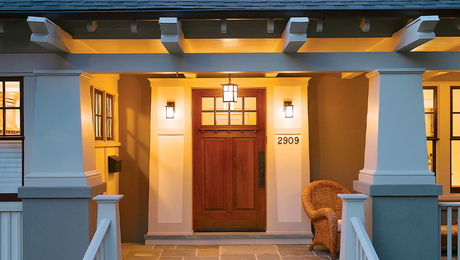Is CALGREEN The Future of Building Codes?
Here’s the news. This week California announced mandatory Green Building Codes to take effect on January 1, 2011, with the goal of reducing greenhouse gas emissions, energy consumption and water use. From the press release: CALGREEN will require that every new building constructed in California reduce water consumption by 20 percent, divert 50 percent of construction waste from landfills and install low pollutant-emitting materials. It also requires separate water meters for nonresidential buildings’ indoor and outdoor water use, with a requirement for moisture-sensing irrigation systems for larger landscape projects and mandatory inspections of energy systems (e.g., heat furnace, air conditioner and mechanical equipment) for nonresidential buildings over 10,000 square feet to ensure that all are working at their maximum capacity and according to their design efficiencies. The California Air Resources Board estimates that the mandatory provisions will reduce greenhouse gas emissions (CO2 equivalent) by 3 million metric tons equivalent in 2020.
Here’s why I’ve had it up to my ears with “green” building. Because “green” has become so politically associated that every time we use the word in FHB, we get a handful of letters asking us to stop “preaching.” At the same time, and many of the same readers picked energy-efficiency as the second most important topic for FHB to cover in our recent subscriber survey. I was under the impression that building an energy-efficient home was the greenest thing you can do. Maybe said readers are interested in energy-efficiency because it saves the other kind of green. Not that there is anything wrong with that. I too would rather spend my money on a vacation than filling my oil tank. But is it such a terrible thing that reducing energy use also reduces emissions that pollute the air we breathe and in turn reduces our nation’s dependence on fossil fuels, regardless of who thinks what about global warming? Is it really that offensive to suggest that using materials that don’t off-gas or harbor allergens is simply a better way to build? Maybe we’re not responsible for climate change and maybe we’re arrogant to think we can correct it, but don’t we want to live in homes that are healthy for us and our families?
It’s not just a soap box. You can now safely assume where I stand on the merits green building. With so many angles to come at it from, I just can’t see a down side. But I’m not here to stand on a soap box, I’m here to make a magazine for designers, builders and remodeler who want to build better homes. So while I think that green homes are better homes, I also have to respond to and respect what our readers want to see in FHB. The question is, does that mean not publishing stories about green building, or not publishing stories with the word “green” in them?
Freedom reigns: Americans don’t like mandates, and we particularly don’t like to be told what to do with our property. Many FHB readers expressed this sentiment in response to two recent stories, one on the reflection of green building in the IRC and another on the IRC adopting mandatory fire sprinklers. I get it, and I will never live in a neighborhood with an association that is responsible for deciding if I can have a clothes line in my yard or a boat on a trailer parked in my driveway. But we also have to face the fact that all of these things make homes more expensive. So where does that leave responsible builders, those who want to build healthy, efficient and safe homes? Until consumers learn to ask what’s going on beneath the drywall or how the carpet affects the air they breathe, better homes will remain a tough sell and a tiny percentage of the market.
Why CALGREEN? I’m curious why California wrote a mandatory green building code instead of incorporating these provisions into their existing building codes. Perhaps they want to be recognized as a leader. Because I believe that “green” building is simply “better” building I would have preferred to see them do the latter and take some of the political curse off of their decisions. It’s the same question I struggle to answer when it comes to FHB. Anyway, it will be interesting to see if other states follow California’s lead and to hear your thoughts on all of this.
Fine Homebuilding Recommended Products
Fine Homebuilding receives a commission for items purchased through links on this site, including Amazon Associates and other affiliate advertising programs.

Reliable Crimp Connectors

Affordable IR Camera

8067 All-Weather Flashing Tape























View Comments
As http://www.santamonicapropertyblog.com/?p=1710 notes, "While California’s largest metropolitan areas have adopted their own green building standards, these new regulations will be particularly useful for smaller jurisdictions that have been unable to develop their own green construction guidelines."